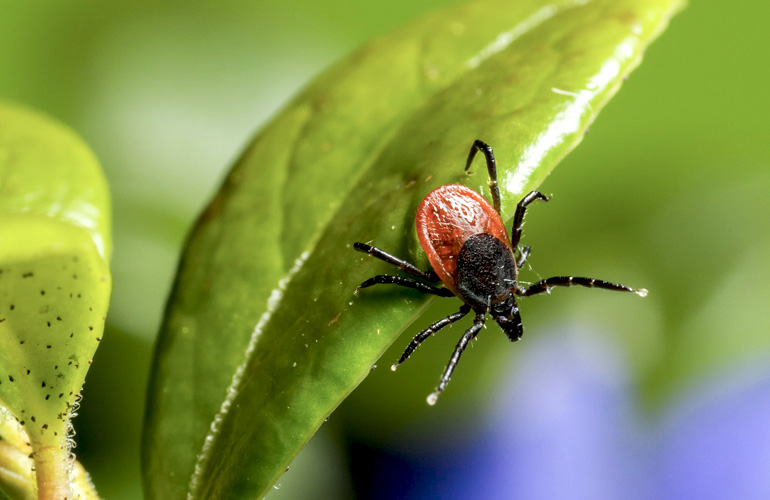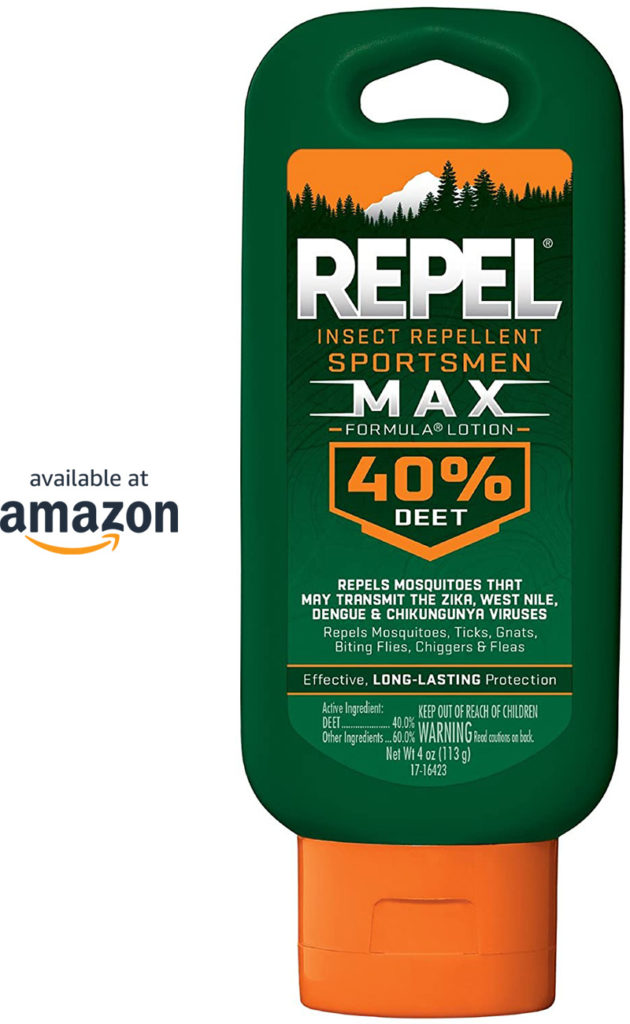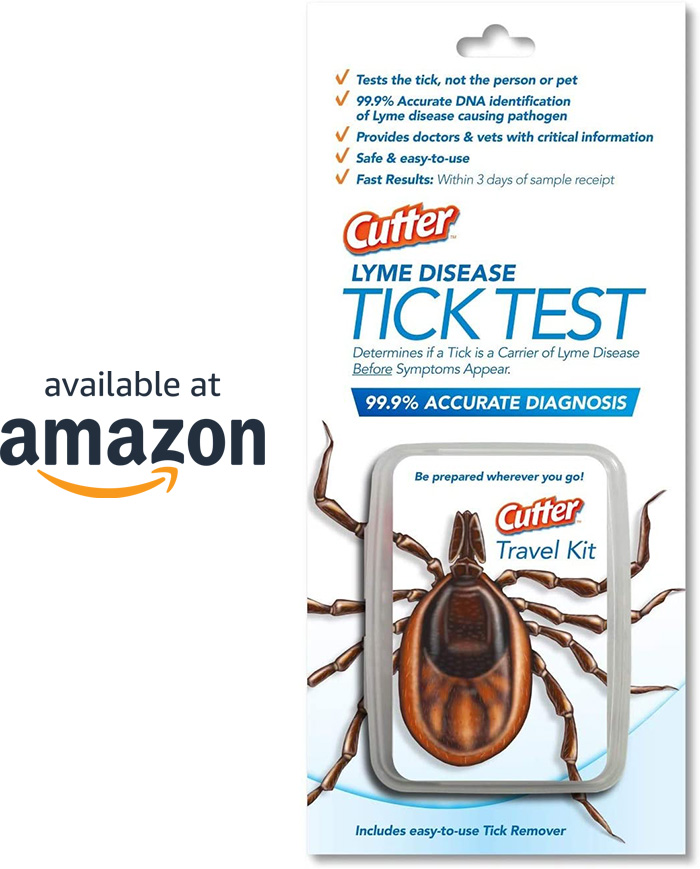Prepping for Ticks and Preventing Lyme Disease

Ticks are obviously a growing concern across the Midwest and Northeast United States, and there has been an absolute explosion in tick populations in many parts of the country. The first time I ever saw a tick in my life was in 2015, and I have seen them every year since in middle and northern Michigan.
That first tick I saw was suckling happily upon my forearm, and I admittedly freaked out pretty hard. I fortunately found it quite quickly, and I experienced no issues with illness of any kind. After that first encounter, I learned everything I could about ticks and how they spread Lyme Disease, and my mind is much more at ease than it was on that day. Knowledge is power, after all!
These days, I practice pretty aggressive tick prevention anytime I’m in the forest or “nature” areas of any type, including my own property. I’d like to discuss some basic tick facts, and dig in to some effective measures you can take to prevent tick-related problems.
Some Tick Facts
As with anything, knowledge is power! Knowing about ticks and how they behave is key to understanding how to deal with them.
How ticks get on you
Ticks crawl onto you from the ground. They hang out on blades of grass and other ground vegetation and they crawl right up on to your body. They will climb onto your foot and make their way up your leg to wherever they decide to latch on.
They don’t fall out of trees. They don’t jump onto you like fleas. They don’t fly like mosquitoes. They simply climb aboard when you walk by (or sit, or lay). Realizing how they get onto you in the first place is important for understanding how to prevent them from doing so.
Different types of ticks
There is a lot of inaccurate information floating around about how to tell a tick species based on its size alone. All the common types of ticks in North America can be found in all types of sizes. The same type of tick can be different sizes at different ages.
Therefore it’s important to identify ticks according to other characteristics in addition to size, such as color and markings. In the Midwest, for example, our most common varieties of ticks are the American dog tick and deer tick (also called blacklegged tick). Other ticks sometimes found in these parts are the lone star tick, woodchuck tick, and brown dog tick. All of these ticks have similar body shapes, but they all have different body colors, leg colors, and markings. In addition, male and female ticks in some of these species have entirely different colors and/or body markings.
Knowing the species of tick you find is important, as some do not generally transmit Lyme disease at all. The American dog tick, for example, may transmit other diseases like Rocky Mountain spotted fever, but contracting Lyme disease from one is almost unheard of. Every tick I’ve ever found on myself has been an American dog tick, and it helps tremendously to know that my chances of developing Lyme disease from them are practically zero.
When ticks are active
People seem to think that ticks are only active in summer. Summer is when we see all the commercials on TV for Frontline and other pet medications for fleas/ticks. Summer is when our vets generally mention ticks to us, and may even suggest the Lyme Disease vaccination (available for dogs, but not humans).
But ticks are not the same as mosquitoes. Ticks can be active any time of year that the ground isn’t frozen. You’re much more likely to encounter them in the summer, as that’s when they’re most active and that’s when you’re most likely to be romping around in the forest, or rolling around in the grass with the kids or pets. But you can absolutely get ticks in the spring and fall in the Great Lakes region.
Tick-borne diseases
Lyme Disease
Everybody knows about Lyme Disease. That’s the big, scary one. If not caught quickly, Lyme disease can cause permanent and serious health problems. The bacteria can affect your nervous system, organs, muscles, and joints. Some people even develop bizarre and permanent symptoms like a violent allergy to red meat.
Anybody can get Lyme disease if they’re not careful. Health, age, gender, race, or socioeconomic status do not matter. There are even several high-profile celebrities living with complications from Lyme Diseases, including Avril Lavigne, Justin Beiber, Ben Stiller, Shania Twain, Alec Baldwin, and Kris Kristofferson.
After becoming infected with Lyme disease, patients often develop a “bullseye-shaped” rash around the area that was bitten. While this does not happen in all instances, it can certainly be an early-warning symptom. Patients often develop flu-like symptoms in the days or weeks after being bitten. If a bullseye rash does appear, this is the time to go to your doctor and get a proper diagnosis. If no rash appears and you know you were bitten by a tick, the time to see your doctor would be at the very first signs of “flu-like” symptoms. If caught very early, strong antibiotics can be administered and there is a very high rate of success in preventing long-term affects of the disease.
Another very useful piece of information is that even ticks that are carrying Lyme disease must generally be latched onto your skin for a period of at least 24-48 hours before transmitting the bacteria to you. This is why it’s so important to conduct daily tick checks. If you catch a tick before it becomes giant and bloated (from drinking your blood), your odds of contracting Lyme disease are much lower.
Rocky Mountain Spotted Fever
Rocky Mountain spotted fever isn’t as common as Lyme Disease, but it still affects thousands of people each year, causing severe illness and health problems. Somewhere between 2 days and 2 weeks after being bitten by a tick infected with this disease, a patient may experience headaches, vomiting, stomach pain, red eyes, and sore muscles. Most infections also present a spotted/splotchy, red rash on the hands, wrists, and/or ankles (hence the name).
Treatment for Rocky Mountain spotted fever is a course of strong antibiotics. For best results, antibiotics ought to be administered within five days of first symptoms.
Despite its name, this disease has been transmitted by ticks in nearly every part of the United States, and is most prevalent in the Midwest and Southeast.
Other tick-borne diseases
There is a list of other strange and somewhat-rare diseases that have been known to spread by tick bite. While pretty uncommon, they range in severity from “unpleasant” to “life-threatening”. Just to name a few:
- Powassan
- Tick paralysis
- Anaplasmosis
- Ehrlichiosis
- Tularemia
- Babesiosis
Tick and Lyme Disease Prevention
Prevention is key! It’s the number one tool for avoiding problems from tick-borne illnesses. Here are some top tips for keeping ticks away:
Keep your grass mowed short
Ticks like tall grass. That’s usually how they get on you and your pets. They like to hang out at the tip of blades of grass and grab on as your delicious foot or leg comes by. Keeping your yard well maintained and trimmed is very effective in keeping them at bay on your own property.
Wear long pants
If you’re going to be in tick-infested places during the warmer months, long pants, shoes, and socks make a big difference. Obviously people like to wear cool summer-wear in the hot season, like shorts and flip-flops. But if you’re going to a forest, field, or anyplace ticks are likely to be in greater numbers, it’s highly recommended to sacrifice a little comfort in the name of tick prevention. Not only will shoes, socks, and pants physically keep ticks off of your skin if they do crawl onto you (thereby giving you more opportunities to spot them before they can find a place to latch on), but clothes give you more surfaces on which repellent can be applied. Additionally, light-colored clothing (such as tan) is advised because, again, it makes spotting dark ticks much easier.
Use tick repellent products
There are two main types of repellents to talk about here. The first is one you’re probably familiar with, and that’s topical sprays or lotions. These usually contain compounds like DEET, and have been used for decades in battling mosquitoes, ticks, fleas, and other bitey insects. While out in the woods, I prefer to use a lotion-type repellent on my legs, because it’s a bit of a thicker layer and seems to last longer than a spray. But if a spray is what you have, use that. Either way, make sure to roll up them pant legs and get that repellent directly on your skin.
The second type is treatment for your clothes. Perhaps the most effective kind is called Permethrin. Permethrin has been around for decades in various forms, and is the main ingredient in treatments for lice, mosquitoes, ticks, and some other crawly pests. It kills ticks and mosquitoes on contact, so it is actually more powerful than a simple “repellent”.
For tick repelling purposes, it comes in a liquid form that can be sprayed on clothing in advance of your trip into nature. Before going to the woods, I will lay out my pants, socks, and shirts out on the patio table and give each side a generous spritzing. Once it dries, it’s odorless and harmless to human skin. The clothing spray is not recommended for use on skin, because the oils in skin break down the Permethrin quickly, rendering it pretty useless against ticks. I’ve found applying it to my pant legs, socks, and shoes to be very effective. I will mention, that while the directions on the Permethrin bottles state that you only need apply the liquid to your clothing once in advance, I actually re-apply it to my pant legs, shoes, and socks once per day while in the wilderness. There was an instance where I did not re-apply, and a tick did somehow make it’s way to my leg for a late night snack. But ever since I’ve made sure to re-apply once per day, I’ve not had a tick on me even once.
Conduct a Thorough Tick Check Every Day
As I mentioned, it’s incredibly unlikely that a Lyme-infected tick will transmit the disease to you unless they have been latched on for at least 24-48 hours. Accordingly, it’s very important to remove any ticks as soon as possible. You’ll be able to tell if they’ve been there awhile, as ticks swell up to an almost-absurd size after drinking your blood for a day or two. Nevertheless, they somehow go completely unnoticed on lots and lots of people each year, resulting in Lyme disease transmission.
So at the end of each day, conduct a thorough tick check of your body. If you’re camping, or otherwise spend time out in nature during the non-freezing months, do the self-examination. It takes a couple minutes, and can save you years of problems. Make sure to check every “nook and cranny”. Armpits are a common spot, as are any warm, dark places. So when I say check everywhere, be sure to check everywhere. Use a mirror, use your camera phone, use a loved one. Just make sure to check yourself from top to bottom! The places you’re least likely to look… that’s probably where you’re most likely to find them. And if you have long and/or thick hair on your head, be sure to run your fingers through to feel around. The head can be tricky to thoroughly inspect unless you have someone helping you, but make sure to do it.
The same goes for pets. If your dog spends any time outdoors in tick-infested areas, be sure to give them a very careful inspection every day. There are a lot more places for a tick to hide on a dog than on a human, because of the dense fur. Use a comb or your fingers to move the fur around and look very carefully in there. Also check inside the ears. There have even been instances of ticks latching on to a dog’s gums inside the mouth.
And by the way, since we’re talking about dogs, don’t forget that there is actually a Lyme Disease vaccine for dogs. So, if your pup spends a lot of time in tick areas, maybe it’s a good idea.
Tick Removal
So what if the prevention methods fail? What if your self-inspection finds a tick stuck on you? Well you need to remove that little sucker, and you need to do it properly.
I’ve heard lots of people talk about various ways they’ve heard of for removing ticks, from slathering it with Vaseline to roasting its butt with a cigarette. But most of these methods that aim to make the tick remove itself from you voluntarily can actually have the opposite effect, causing the tick to try burrowing deeper into you!
Instead, the officially-recommended way to remove a tick is with a pair of pointy tweezers. The idea is to grab the tick as close to your skin as possible, near its head, and pull them straight out very gently. Don’t unnecessarily squeeze its body with those tweezers, as it can cause the bug to regurgitate back into you through its mouth, potentially transmitting disease.
When you begin pulling the tick out of your skin for the first time, you may be surprised at the force you need to use. It’s not a lot, but it’s more than I expected. It doesn’t hurt at all. In fact, it feels like nothing. But I couldn’t help but notice the resistance when plucking it off my arm that first time.
After it’s removed, you have two choices: Kill it immediately (by dropping it into a campfire, cup full of alcohol, or whatever means you prefer), or save the tick and have it tested for Lyme Disease. There are consumer-oriented lab services that will test a tick to see if it has Lyme Disease. Basically, you send them the dead tick in a tiny little envelope, and they test it. These tests are becoming increasingly popular because instead of freaking out with worry after finding a tick on yourself, this will tell you with certainty if there is even any chance that you could have Lyme Disease or not.






